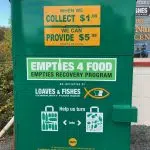
Food stamp change fuels anxiety as states try to curb impact
CHICAGO — Having food stamps offers Richard Butler a stability he’s rarely known in his 25 years. He was in state custody at age 2, spent his teen years at a Chicago boys’ home and jail for burglary, and has since struggled to find a permanent home.
The $194 deposited monthly on his benefits card buys fresh produce and meat.
“It means the world to me,” said Butler, who shares a one-bedroom apartment with two others. “We can go without a lot of things, like phones and music. We can’t go without eating.”
But that stability is being threatened for people like Butler, who are able-bodied, without dependents and between the ages 18 and 49. New Trump administration rules taking effect April 1 put hundreds of thousands of people in his situation at risk of losing their benefits. They hit particularly hard in places like Illinois, which also is dealing with a separate, similar change in the nation’s third-largest city.


